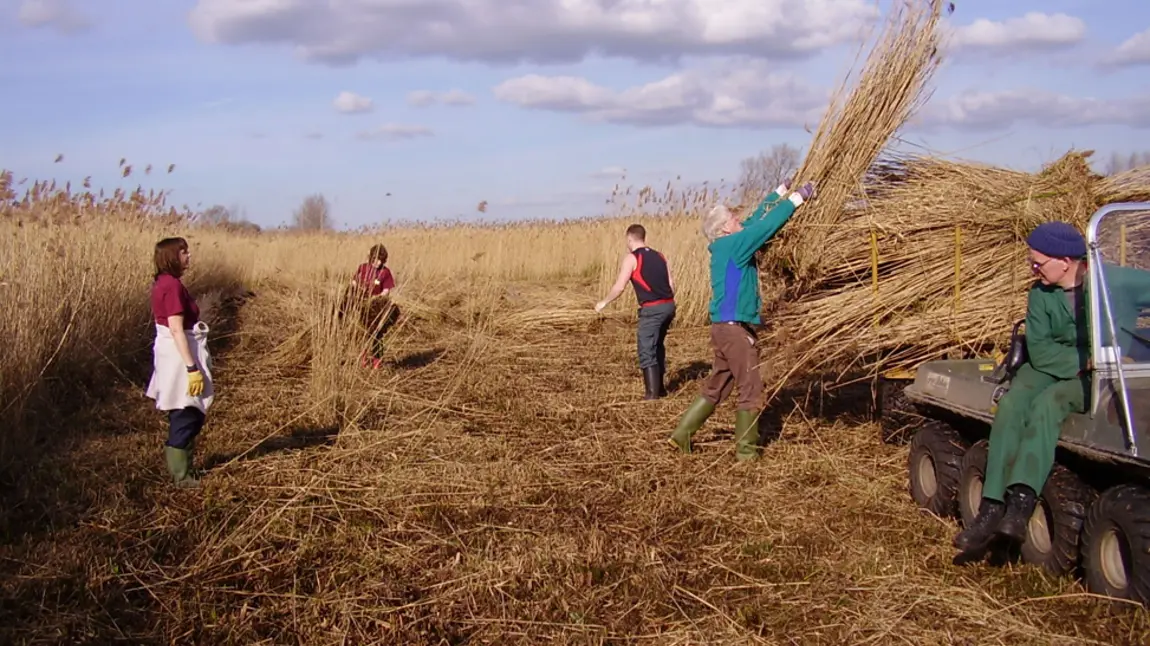Secrets of the Second World War revealed in the Great Fen

Following the excavation the land will be restored to a mix of fenland habitats and managed as part of the Great Fen nature reserve by the Wildlife Trust for Bedfordshire, Cambridgeshire and Northamptonshire. The Heritage Lottery Fund (HLF) is funding the excavation as part of the Great Fen Education and Community programme and is also supporting the post-dig land restoration. A Battle of Britain Memorial overflight is scheduled for 3pm on Thursday 8 October.
Spitfire X4593, of 266 Rhodesian Squadron Royal Air Force, was originally based at RAF Wittering. On a routine training flight with two other Spitfires, Pilot Officer Harold Edwin Penketh was seen to break formation entering a dive from which he failed to fully recover. Witnesses stated that his aircraft partially recovered at around 2,000ft but then re-entered a dive and struck the ground vertically.
Pilot Officer Penketh did not attempt to use his parachute and was killed in the crash, his body was recovered and returned to his home town of Brighton. Investigations concluded that either a failure of the oxygen system or other physical failure had occurred.
A geophysical survey of the site was conducted this August by Peter Masters, from Cranfield University Forensic Institute, and the remains of the plane have been located. The excavation will be carried out by Oxford Archaeology East project, managed by Stephen Macaulay. They will be joined by personnel of the Defence Archaeology Group who oversee Operation Nightingale, a ground-breaking military initiative using aspects of field archaeology and heritage skills to aid recovery and skill development of service personal and veterans who are suffering injuries due to military service, and aviation archaeology experts from Historic England. Great Fen staff and volunteers from the Great Fen Archaeology Group will also join the excavation.
Material from the excavation site will be taken removed for sorting and cleaning, with it being likely that the major airframe components will need mechanical removal. All artefacts remain the property of the Ministry of Defence and RAF Wyton Pathfinder Museum will receive the excavated items into storage in the first instance. A full archive report will be produced within 12 months of the completion of fieldwork and deposited in the Cambridgeshire County Council Historic Environment Record.
Now is the ideal opportunity to excavate the Spitfire as it coincides with the 75th anniversary of Battle of Britain and of the crash itself but more importantly it allows us to record this important piece of our fenland heritage before the rising water table – as we restore the area to wetlands – makes this impossible.
The Great Fen Discovery Day at Holmewood Hall on Saturday 17 October will tell the story of the excavation and some finds from the excavation will be on display.
Notes to editors
About the Wildlife Trust for Bedfordshire, Cambridgeshire and Northamptonshire
The Wildlife Trust for Bedfordshire, Cambridgeshire and Northamptonshire works to make the three counties a place where nature matters, where wildlife can flourish and enrich the lives of the people who live here: with your help the trust cares for local wildlife. Ninety five per cent of the local population live within five miles of one of its 126 reserves and contributions of time or money will directly benefit local wildlife. Find out more at the Wildlife Trust for Bedfordshire, Cambridgeshire and Northamptonshire website.
About The Great Fen project
The Great Fen Project is transforming farmland between Huntingdon and Peterborough into a dynamic, diverse and beautiful fenland landscape and is one of Europe’s largest and most ambitious habitat restoration projects, creating benefits for wildlife as well as leisure and business opportunities for people. Far from being a waterlogged landscape the 3,700 hectare reserve – the size of a small city – will be a mosaic of threatened wildlife habitats, including woodland and grassland, that will store floodwater to reduce the risk of flooding and protect surrounding farmland and communities.
The Great Fen (including the Spitfire excavation) is supported by a grant of £9million from HLF. The project group would also like to thank Jonathan Papworth, Breheny and Holmewood Hall for their help in kind on this excavation.
Visit the Great Fen website to find out more about the project.
Further information
Caroline Fitton, Communications Officer for the Wildlife Trust for Bedfordshire, Cambridgeshire and Northamptonshire, via email: Caroline.Fitton@wildlifebcn.org or tel: 01954 713 567; or Jo Dickson, Wildlife Trust Communications Manager, via email: Jo.Dickson@wildlifebcn.org or tel: 01954 713 551.